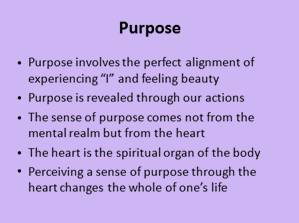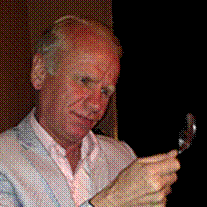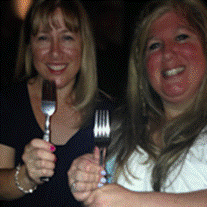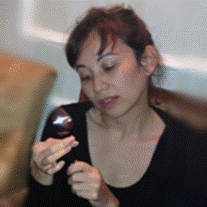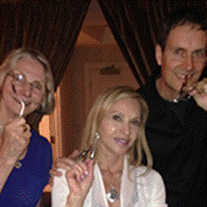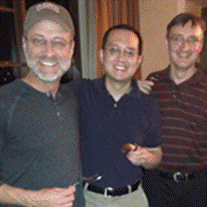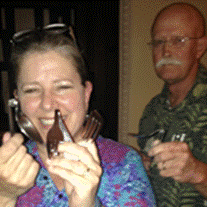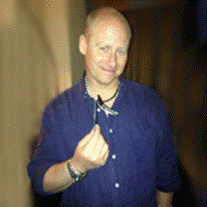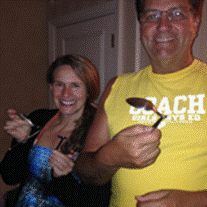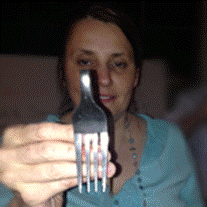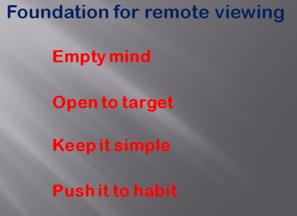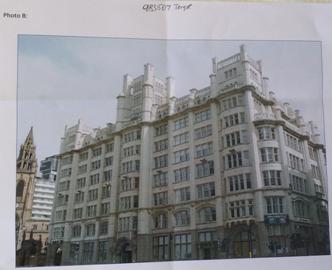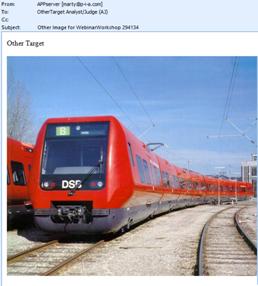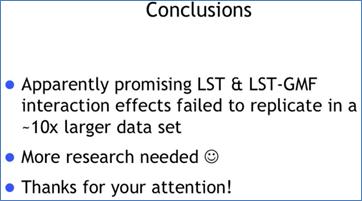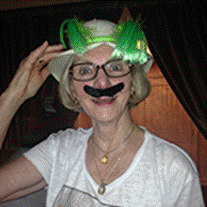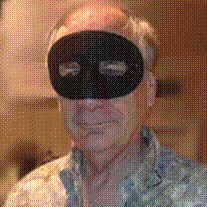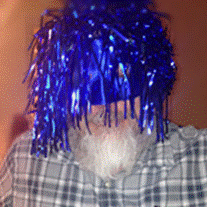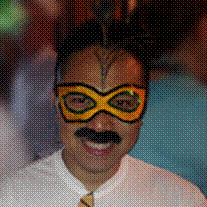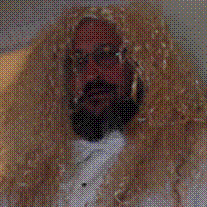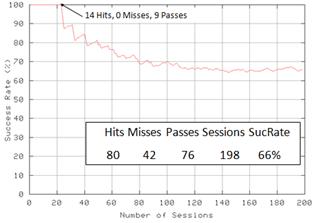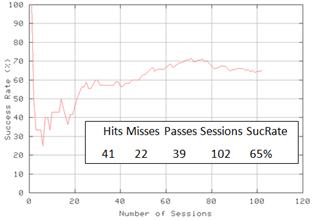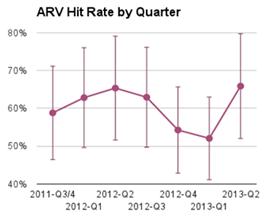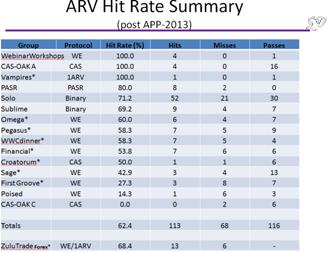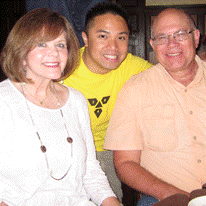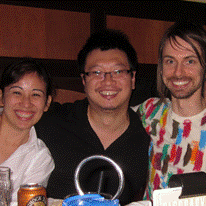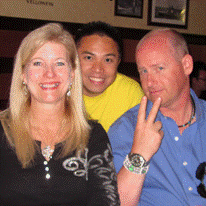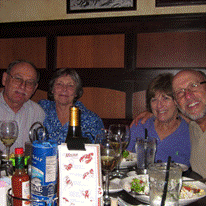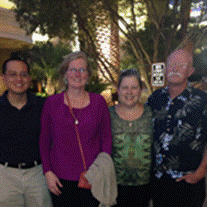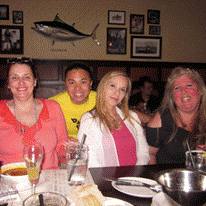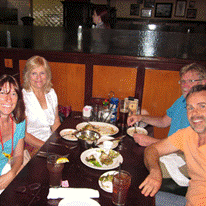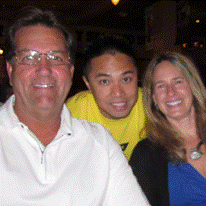Background
The Applied Precognition Project (APP)
has as it mission "to publicly explore, research and apply logic and intuition/emotion to predict future event outcomes, enabling participants to evolve personally while contributing to the elevation of global consciousness."
The first APP conference-workshop-webinar (CWW), APP-2013, was held in Las Vegas NV as was APP-2014, which will be summarized below. APP-2015 will be in New Orleans, June 22 - 25. In Las Vegas, we did sports wagering applications; in New Orleans, the upcoming CWW will focus on financial applications and health applications!
Yes, health and precognition are indeed connected! Joe Gallenberger will be giving his talk at APP-2015, "Inner Vegas - Creating Miracles, Abundance & Health." Dean Radin will be giving a webinar talk, "Precognition and Your Health." The overall theme of APP-2015 is:
LIVING PRECOGNITION: CREATING YOUR FUTURE:
Integrating precognition into your life; in particular, the important connections with health and wealth.Joe McMoneagle and Marty Rosenblatt will be the primary facilitators for this "Healthy, Wealthy and Wise" CWW...join us if you can.
APP-2014 Summary
APP-2014 was facilitated by Joe McMoneagle and Marty Rosenblatt. It had elements of a conference, workshop and webinar.
- Conference attendees listened to renowned speakers in the fields of precognition, RV and ARV. The speakers included Dean Radin, Joe McMoneagle, James Spottiswoode and Greg Kolodziejzyk.
- The workshop included predicting seven baseball games, which resulted in 6 wagering hits, 1 wagering miss (6 games during the formal APP-2014 and 1 game in the Introduction Workshop)
- The webinar featured six formal presentations broadcasted live via the internet.
Intro Workshop (June 23)
A day before APP-2014 officially started, Joe led an Introductory Workshop focusing on standard Binary Associative Remote Viewing (ARV). There was also a non-ARV presentation by Dave Silverstein opening people up to other ways to experience precognition. The Intro was entitled, “Foretelling the Future, Applying Precognition to Sports/Financials, Introduction and Training by Doing it!” During the Intro, we applied ARV to the FOReign EXchange (FOREX) market in the morning and a sports game in the afternoon. Some wagered for the first time and won! Many of the participants in the Introduction Workshop also attended APP-2014.
Day 1 (June 24)
Each of the three days during APP-2014 focused on a different ARV approach for applying precognition. Day 1 was standard Binary ARV. Two prediction were made, one before lunch and the other after lunch. Some viewers did the remote viewing while others did the independent analysis/judging. Joe led the judging in the morning and Nancy Smith led the afternoon judging session. Joe applied his analytic approach to judging which relies heavily on first gestalt impressions. Nancy, on the other hand, led her judging session using the SRI/Targ Confidence Ranking method. There were winning wagers based on both predictions.
We wagered on “Over/Under”. This is a type of wager where the odds-makers set the “line” for the total number of runs in the game, and we have to predict whether the actual number of runs will be over or under the line. Hey, we were in Las Vegas and those that chose to wager “wagered wisely”, which is quite important. Reducing the stress associated with a prediction generally increases the probability of success. Anyway, who wants to keep doing ARV if there is stress involved. This is a voluntary activity which can be for fun and profit. Always wager wisely, if you wager. Many ARVers don’t wager and do it to explore their own consciousness…and to explore communication with their submerged consciousness.Webinar 1: Skip Atwater and Marty Rosenblatt
“Nonlocal Empathy” was to be presented by Skip Atwater as the first webinar. However, he could not make it and Marty presented what was basically Skip’s presentation.
The meaning of nonlocal empathy as it relates to ARV is summarized nicely by the following: “Hypothetically, the more empathetic the ARV practitioner becomes with future-self, the greater the conscious awareness of the designated feedback experience.”
The empathy here is truly nonlocal, entangling information between the RV session and the Feedback Session. So perhaps the ongoing research on ‘mirror neurons’ that seems to provide a neurological basis for empathy will also eventually be shown to be involved with our consciousness being nonlocal.
Empathy has many different textbook definitions with two major components. From an ARV entanglement perspective these two components are:
- Affective Empathy: also called emotional empathy: the capacity to respond with an appropriate emotion to future-self's mental states.
- Cognitive Empathy: the capacity to understand the future-self's perspective or mental state.
Empathy has both the emotional and intellectual components. The intellectual component is necessary so you can record the precognitive experience in a transcript. The emotional component probably serves to strengthen entanglements in a nonlocal fashion.
Conclusion for ARVers and RVers who get feedback: You are nonlocal when you RV and empathetically entangle with your ‘future-self’ during the associated FeedBack Session. Also, your FeedBack Session empathetically entangles with your “earlier-self” in your RV Session. You are indeed a nonlocal being connected to “outside of time”.
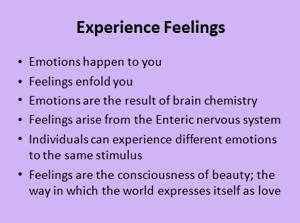
Webinar 2: Greg Kolodziejzyk
The second webinar was by Greg Kolodziejzyk, known affectionately to most of us as GregK. He did tell us how to pronounce his name, “It’s Gr-eh-gg”. He spoke about a paper he wrote that was published in the Journal of Parapsychology, “Greg Kolodziejzyk’s 13-Year Associative Remote Viewing Experiment Results”.
In his experiment, he was the only viewer and used self-judging. He utilized a consensus approach for his judging. His overall statistical significance is very high, with a z-score of 4. However, what is most impressive to us is his persistence and the long-term hit rates he achieved for his consensus based projects. He had 285 project questions (precognitive tasks). Most of the predictions involved futures markets; e.g., predicting the future price of gold.
He did a total of 5,677 ARV trials. His Hit Rate on the 285 predictions was 60.3%. This hit rate was increased to over 70% by increasing the number of trials in a project question, and giving more weight to higher subjective confidence scores reflecting the quality of the match between the remote viewing and one of the two target images.
Greg used a 0 to 4 subjective confidence score, this is similar to the 0 to 7 Confidence Ranking scoring system. Greg’s data show a significant correlation between his subjective scores and the associated hit rate the higher the score, the higher the hit rate.
The good news is that the higher the scores, the better the expected hit rate. The not-so-good news is that higher scores are much less likely to occur, at least in this study.
181 predictions resulted in actual futures trades where capital was risked. Of these, 60% of the trades were profitable, amounting to approximately $150,000. So, this is another example of making money applying ARV over the long-term.
Evening Program: Spoon Bending Party
This fun and very successful program was led by Debra Katz and Michelle Bulgatz. After a one minute pep talk about discarding limits of what's possible, and asking participants to describe past PK successes, of which there were many, someone jumped up and shouted, "Come on everyone, let's do it!" At that point, pandemonium broke loose and spoons and forks seemed to melt into all sorts of odd contortions. People ran about the room, fluctuating between yelling/flirting at their cutlery until it gave way.
If a picture is worth a thousand words. Here are many thousands of words to share the fun we had.
Day 2 (June 25)
The group applied the Winning Entanglements (WE) protocol for making two baseball game predictions.
In a standard ARV prediction, there is one coordinate, one transcript and one target (usually a photo). There are two “possible targets”, one associated with the event of an Over outcome and the other associated with the event of an Under outcome. (Over and Under are the two possible “Sides”.) At the end of a game the outcome for the winning side is revealed. The viewer is then shown the actualized target, which is the target associated with the actual outcome. The other photo is discarded.
WE is similar to doing two standard ARV predictions, but with a twist. In a WE prediction, there are two coordinates, two transcripts and two targets. The twist is that instead of associating each possible target with the over or under event:
- One target is associated with the “Winning Side” while the other is associated with the “Other Side”.
- One coordinate is randomly associated with Over and one is associated with Under.
- The two targets may be considered possible targets since they are not yet associated with over or under. Both will become targets, however neither photo is discarded.
- The actual Over or Under Winning Side (known, for sure, after the game) then determines the actualized coordinate for the Winning Side target; similarly, the association of the coordinate with the Other Side target is actualized. Thus the two important ARV FeedBack sessions can be performed with the appropriate targets/transcripts/coordinates.
For example:
- Tasking: 2 precognitive RV transcripts are requested with 2 coordinates:
- Describe/Sketch Your 123456 Feedback Target
- Describe/Sketch Your 654321 Feedback Target
- At the time of the tasking, but hidden from the viewers,
- Coordinates are randomly associated with the two sides,
123456 for Over
654321 for Under- The 2 Targets are selected and one is randomly chosen as the “Winning Side Target” and the second is designated as the “Other Side Target”.
- The viewer uploads 2 transcripts, one for each coordinate, to the APP server/database. Each transcript is associated with one of the two targets only when the game outcome is known.
- We encourage viewers to self-judge and this step occurs right after they submit their transcripts, since they are already online.
- Feedback is supplied after the game, when the Winning Side (and therefore the Other Side) is known. For example, if the game results in a total score of 10 runs and the line was 7 1/2, then
- Over is the “Winning Side” and coordinate 123456 is now known, for sure, to be associated with the “Winning Side Target” and the 123456 transcript.
- Under is the “Other Side” and 654321 is now known, for sure, to be associated with the “Other Side Target” and other transcript.
This approach is designed for the viewer to do her/his own viewing, analysis/judging and feedback. The viewer is in charge and fully responsible for the WE personal prediction. In the WE protocol, the focus is on increasing each viewer's precognitive capabilities using their own intention, attention and expectation.
In addition, we believe in the power of the group as well. Multiple viewers are generally involved in making an actual “Group Prediction” that is used for wagering. This was done in Vegas and is done via the Internet throughout the year. The first WE prediction was a miss. Yes, misses do happen. There was much discussion about WE versus other approaches, which may have been distracting to some viewers. The second WE prediction described the winning side and led to winning wagers. WE applies a combined consensus approach for personal and group predictions.
One WE group that started in May 2014, a sporting group with a new group manager, has a 91% Hit Rate (10 Hits, 1 Miss, 3 Passes) as of Sept 8, 2014. The other WE groups now doing Forex predictions are not doing as well. Currently in the 60% hit rate range. There is more to ARVing than just the protocol as was extensively discussed during the workshop. For example, viewer skills, general manager skills, and judging methodologies probably explain many differences within any given protocol. Data is being, and will continue to be, accumulated to clarify the wide variations seen between groups. The objective is to improve both individual and group hit rates.
Webinar 3 – Joe McMoneagle
The first webinar on this day was by Joe entitled, “Getting Better at Precognition”. Joe enthralled us, as usual, with new stories and examples from the early operational and scientific work in remote viewing. He also discussed very practical ideas like:
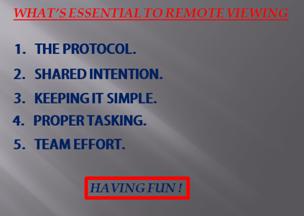
We were lucky enough to also have Joe participate with the group in a standard binary ARV prediction and a WE prediction. His transcripts and the associated Targets follow…actually quite amazing matches, no matter how long you are around precognition!
Here is Joe's binary ARV transcript and the associated target.
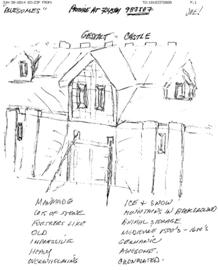
Here is Joe's Winning Entanglements (WE) transcript and the associated target.
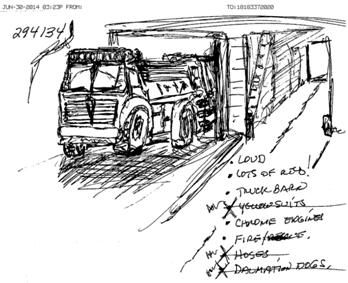
Joe shows here, as do the many other excellent transcripts from the workshop participants, that the differences in protocol are less important than just letting the precognitive information flow from the subconscious to the transcript.
Concerning differences in protocols, Debra Katz wrote the following about his presentation: “Joe McMoneagle helped participants to understand that sometimes less is more. He demonstrated that when it comes to ARV sessions, all that is needed from a viewer is to describe the initial ‘gestalts’ that come to mind. These may be shapes, words, concepts, colors and really anything that stands out about a target. They can be broad concepts or particular words. His definition of the word gestalt is very different from that used in Controlled Remote Viewing terminology, which uses the term to mean the most basic aspect of one thing. As Lyn Buchanan wrote on his CRV website: “dew, lake, ocean, sweat, rain, ice, etc., all have the gestalt of water. If you were to add gasoline, bleach, and oil to that list, the basic gestalt would be liquid.”
Joe also felt that a viewer shouldn't have to have more than one page of data for a session. In fact, when observing him rate sessions, it was clear he wasn't even considering what was included on the second or third pages of remote viewers’ sessions. When questioned about this, his response was, “Most of the useful information will be on the first page; viewers start to get derailed or encounter displacement if they sped too much time or effort in an ARV session”.
Furthermore, Joe handles Analytic Overlay different than do many remote viewers, particularly those trained in CRV. For example, Joe believes that if a viewer writes ‘AOL’ next to a word, that viewer is doing so precisely because he/she is pretty sure it's not accurate and should be discarded. However, many viewers, including myself have been trained that if we get any high level noun, such as ‘dog’ or ‘boat’ that we should include it so that it can be considered in a session by the rater, who usually understands that it may not be correct but may contain some useful hints about the target.
This experience helped me to see how important rater/viewer communication is, and how important the defining of words is because even when two people use the same word in remote viewing, they may mean two different things. It was also a reminder that viewers can adjust the way they do things when asked or made aware that this will help the overall process. Many people don't realize that viewers can be versatile when given the proper instructions and opportunity to change.”
Joe also told us a little about a new RV experiment he is doing with Ed May concerning very large changes in physical entropy. This is a natural follow-up to the photographic entropy changes used in CAS. These physical entropy changes are done using liquid nitrogen poured out at some “Outbounder” target sites and not others. Which ones are which is kept completely blind to both Ed and Joe. The project is about half over.
Webinar 4: James Spottiswoode: “Precognition and Physical Factors”
James has been doing scientific research in the general area of psi for many years. He began by reviewing earlier work and the general topic of how physics usually proceeds. He also discussed the problems with changing existing theories, for example quantum mechanics and general relativity, since these changes tend to falsify the existing experiments.
15 years ago or so, James started looking for physical variables that might modulate psi. He wanted to start with the highest effect size data since there is so much noise in psi data. He concluded that the free response work of RV and the Ganzfeld experiments were the best data set and he focused there.
He looked at LST (Local Sidereal Time), even though he felt it was not a primary variable. He gathered the data because of analogies to reflection, say off the moon, which is very direction-orientation dependent. LST is orientation dependent between the earth and the stars. When he looked at that data, there was indeed a strong positive effect at 13:30 LST with a slight negative effect at about 18:00 LST. This was published in his 1997 paper, in the Journal of Scientific Exploration, Volume 11 No. 2, under the title, “Apparent Association Between Effect Size in Free Response Anomalous Cognition Experiments and Local Sidereal Time”. It utilized about 2,500 trials from 41 peer-reviewed published studies.
In the best tradition of science, James continued to collect more data. He now has a new database which is roughly ten times bigger than in the earlier study. His data includes the work of GregK that we heard about on the previous day. Unfortunately, the new database does not support the original findings. Greg’s data was not dominant, in case you were wondering, although he too did not see a significant LST effect. At the left is James’s precognition effect size chart (zero means no effect, 0.1 is, roughly speaking, a moderate effect).
And here are the summary and conclusion charts that James presented. James reported this informally at the APP meeting before formally publishing the results, and we thank him for that.
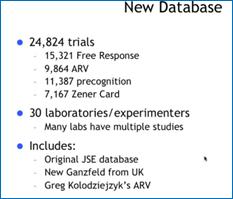
Evening Program: Direct Psi Dowsing and Psychical Arts Party
This was organized by Dave Silverstein. Dave started the evening by getting everyone into costume. The costumes helped everyone to be relaxed and got everyone in the mood to try and explore different modes of psi. Participants explored a variety of dowsing materials from rods to pendulums to other strange looking artifacts. Tarot Cards, Runes and Crystals were also there for exploration. It was a blast! There was loads to explore and it was a joy to laugh at each other for the silly costumes we all tried on.
Day 3 (June 26)
During this day the CAS (Computer Assisted Software) protocol was introduced to the workshop participants by Jon Knowles. This very innovative software for ARV was developed over a period of decades by Ed May and associates at the Laboratories for Fundamental Research. Ed May and Sonali Marwaha recently released a new book, “Anomalous Cognition: Remote Viewing Research and Theory”, which features a large collection of papers regarding the latest in research methods, physiological research, decision augmentation theory, entropy and current research challenges.
Three Key Concepts of CAS:
- Computer judging permits a statistical analysis, involving human “fuzzy logic” choices that provides a quantitative measure that the transcript is indeed a precognitive match to one of two dissimilar targets chosen by the computer.
- Using the computer for judging allows the non-actualized target to not be seen by anyone. The non-actualized target simply disappears and only resides in computer memory.
- Gradients in Shannon Photo-Entropy were relatively high and similar for all potential targets. One of the key concepts tested and refined over many years is the importance of this gradient as compared to the entropy value itself. Shannon entropy is a measure of disorganization, perhaps unpredictability. A set of 300 photos was developed in which the gradient in Shannon entropy across all the pixels in the photo was measured.
ARV sometimes experiences a phenomenon called displacement. This occurs when the session transcript provided by the viewer contains elements of both photos or an excellent description of what turns out to be the wrong photo.
It is thought that one source of displacement occurs when the viewer and/or the tasker/group manager is allowed at some stage in the process to see both photos. One way to reduce or perhaps eliminate displacement is to allow no human to ever see both photos for that event. How could this be accomplished? CAS embodies an ingenious structure. A profile for each photo was compiled by six independent evaluators based on how much each of 24 categories was present in the photo. One innovation was to use “fuzzy logic”, in which the judge rates, on a scale from 0.0 to 1.0, the extent to which the category is present and visually impacting in the session. The computer then has a “profile” of each of the 300 photos on its hard drive based on the values assigned for each of the 24 categories. The 24 categories will not be mentioned here because it is felt best that the viewer (and potential viewers) not know the categories.
When a trial takes place, the human “coder” looks at the viewer’s transcript and fills in the fuzzy logic form which contains the 24 categories, creating a profile of the viewer’s session. This profile can then be statistically compared to the fuzzy logic profiles done for any of the 300 photos.
The computer then randomly selects two photos from orthogonal (widely different) categories and assigns a Figure of Merit (FoM) based on the product of accuracy and reliability, now quantifiable, of the transcript compared to each of the two photos. The accuracy is how much of the session transcript is found in the photo. The reliability measures how much is found in the session but is not in the photo. Both measures are important to balance the amount of accurate information versus inaccurate information in a transcript.
If a FoM of >.4519 is achieved, then a prediction is made. This FoM was chosen to provide a high confidence level for a successful prediction. In tests with Joe McMoneagle and two other top viewers, very high hit rates, of approximately 90%, have been attained, albeit with a large number of passes (a pass occurs when the FoM does not reach the threshold). It is this unprecedented high rate of success that attracted APP to CAS, and we thank Ed for providing CAS to APP.
In trials with CAS by Ed May, only one viewer was used for each event – and the same in a trial Jon Knowles ran in APP in the fall of 2013 using the CAS software. The result was 4 hits, 0 misses, 16 passes. Total accuracy, but 80% passes. Ed May says they have about 70% passes.
In Las Vegas, the CAS software was tried out for the first time with a relatively large group (25 viewers), all viewing for the same event but each receiving their own separate feedback photo. The 25 viewers did sessions and submitted their transcripts. Processing the sessions took longer than expected and due to time constraints only the first 10 transcripts scored were used to make a prediction. Among the first 10 transcripts, two viewers (Rick and Stephen) achieved a FoM above .4519 for outcome B. Some of us bet this outcome, and it was a hit since Outcome B actualized.
The remainder of the transcripts were coded and feedback was given to all the viewers, either in person or by email. There was great interest in seeing the CAS software used further in APP groups, and that is happening.
The time required to do so many CAS predictions meant that we could not do a second CAS prediction. Instead, Joe led us in a standard binary ARV prediction, which he judged. This prediction was also profitable for those that wagered.
Webinar 5: Dean Radin
The first webinar this day was by Dean Radin entitled, “Was Buddha just a nice guy?” based on his book, Supernormal: Science, Yoga, and the Evidence for Extraordinary Psychic Abilities. Dean first discussed consciousness and three basic approaches:
- Physical brain neuroscience
- Mystical traditions – Consciousness with a “big spiritual C”
- Energetic states connecting the above two
He then transitioned to yoga discussions to bring in the oldest Yoga traditions, with written records going back about 2,000 years. This tradition includes the Siddhis, which in Sanskrit means something between or a combination of perfection and attainment of psi-like skills. Some of these skills we recognize and have been proven, others still seem impossible to most of us. However, being right-on with some, perhaps the others are attainable as well?
Dean feels that the Siddhis that have been basically proven by science with a high confidence are telepathy, clairvoyance, precognition, and perhaps small scale psychokinesis. There is a type of space/time independence to these abilities and they are like a first basic sense, not a “sixth sense”. These are modulated by talent, experience, belief, emotion, empathy, motivation, openness…
Here are some of the other less-accepted Siddhis:
- Super healing and to the extreme, healing yourself to live forever
- Inedia, the ability to live without need for food or water
- Levitation, by becoming extremely light
- Speed of movement
- Psychokinesis, the ability to move large and small objects
These siddhis are found in all cultures by different names: Charism, Karamat, Nahash, Gnon She, and are present in all shamanic traditions.
Dean discussed many scientific experiments that he is working on. One involved consciousness focusing on the “double slit” experiment in clever measurements on the rather standard quantum mechanical setup. The idea was to measure whether consciousness can influence the observed interference pattern. And the answer is yes, plus he obtained strong confirmation that meditators have more of an influence than non-meditators.

Dean publishes his work in mainstream journals, like Physics Essays. He has observed that many scientists are more interested in the general area of psi than they are willing to talk about openly. This is based on the number of scientists looking at online versions of psi papers.Webinar 6: Marty Rosenblatt
Marty’s presentation was entitled, "80% Long-term ARV Hit Rates? Viewers, Judges and Group Managers." The primary theme is that when doing ARV, you are telepathically in touch with your future self. Isn’t that cool?
You are the Remote Viewer developing the transcript. You are the Feedbacker whose consciousness experiences the Feedback Target. When you make this precognitive contact, a 7 year old or your grandmother could do the judging!
Yes, the magic is in you, but where’s the fun in it if you don’t share your precog journey with others? In APP, the focus is on the long-term growth/transformation at both a personal and societal level.
Most of us who have been doing ARV for even a short while have experienced a session so good that chance is clearly not involved, a type of precog telepathy was indeed involved. So, the issue becomes: how can I do this more often, more reliably?
Joe McMoneagle was asked in an interview, “How much of ‘psi talent’ do you think is really a matter of psychology allowing/accepting psi?” He answered, “All of it. That comes from ‘knowing’ it’s real, not believing it to be so.”
What is the mindset that will lead each of us to reach the next level in ARV accuracy, perhaps 80% or more? An excellent start, and perhaps even the answer, is in a paper by Joe McMoneagle and Ed May calling out intention, attention and expectation as the key psychological factors. The paper ends with the following, “What constitutes a psi-favorable environment is not well understood, but is, nonetheless important. There are a number of cases where it might be assumed that the circumstances would not be psi favorable (e.g., sea-sick viewer, demonstrations that had to be successful to obtain the next contract, next to 155 mm Army gun range, etc.) but often high quality remote viewing was obtained even then. What is clear, at least to those of us on our long-established team, is that intention, attention, and expectation play a very important role in the success of both application and research of remote viewing.”Intention and attention get a lot of attention, however, expectation is at least as important in our opinion. Two contrasting examples: (1) Do you expect the sun to come up tomorrow? (2) If you buy a Super Lottery ticket, do you expect to win? You take the sunrise for granted, don’t you!
Expectations in ARV are often much more subtle, especially after missing a prediction…hey, it happens. However, it is important to get your conscious and submerged consciousness in sync with the expectation that the next prediction will be a hit and for the long-term, expect to reach a hit rate that feels appropriate for you.
Psychological journeys will be quite individualistic. For example, see the following charts and note that both viewers achieve a 65% long-term hit rate, but their psychological journeys must have been quite different.
Enjoy your personal precog journey as you join with others in APP to form groups of precogers. Below on the left, is a summary of results, by calendar quarter from the beginning of APP to APP-2013 (in June 2013). These data involved very few individual groups. The chart on the right shows the formation of many new groups and a summary of all groups for the period APP-2013 to APP-2014.
The Post APP-2013 results have most groups with too little data to be significant. However, taken as a whole, these are the stats for the year:
- Hit Rate = 62%
- P-one-tail = .0005
- Znormal = 3.3
- Odds vs. Chance = 1960 to 1
Evening Program: Farewell Dinner
We took over a big part of Kings Fish House Restaurant and were joined by many who were going to the IRVA Conference starting the next day. This included Pam Coronado, the current IRVA President, Paul Smith, Paul’s son Chris, and Nancy Jeane.
Next year, we look forward to APP-2015, which again will be held right before the IRVA conference. We hope you will be able to join us and enjoy the fun and learning.
_____________________________________________________________
References and Notes
1. Supernormal.
Dean Radin
From the Preface:
Can yoga and meditation unleash our inherent supernormal mental powers, such as telepathy, clairvoyance, and precognition? Is it really possible to perceive another person's thoughts and intentions? Influence objects with our minds? Envision future events? And is it possible that some of the superpowers described in ancient legends, science fiction, and comic books are actually real, and patiently waiting for us behind the scenes? Are we now poised for an evolutionary trigger to pull the switch and release our full potentials?
2. "The Reality of ESP: A Physicist's Proof of Psychic Abilities"
Russell Targ
3. "Feeling the Future: Experimental Evidence for
Anomalous Retroactive Influences on Cognition and Affect"
Daryl J. Bem
Cornell University
Journal of Personality and Social Psychology, 100, 407-425. © 2011 American Psychological Association
The term psi denotes anomalous processes of information or energy transfer that are
currently unexplained in terms of known physical or biological mechanisms. Two
variants of psi are precognition (conscious cognitive awareness) and premonition
(affective apprehension) of a future event that could not otherwise be anticipated
through any known inferential process. Precognition and premonition are themselves
special cases of a more general phenomenon: the anomalous retroactive influence of
some future event on an individual’s current responses, whether those responses are
conscious or nonconscious, cognitive or affective. This article reports 9 experiments,
involving more than 1,000 participants, that test for retroactive influence by “timereversing” well-established psychological effects so that the individual’s responses are
obtained before the putatively causal stimulus events occur. Data are presented for 4
time-reversed effects: precognitive approach to erotic stimuli and precognitive
avoidance of negative stimuli; retroactive priming; retroactive habituation; and
retroactive facilitation of recall. All but one of the experiments yielded statistically
significant results; and, across all 9 experiments, Stouffer’s z = 6.66, p = 1.34 × 10
-11
with a mean effect size (d) of 0.22. The individual-difference variable of stimulus
seeking, a component of extraversion, was significantly correlated with psi
performance in 5 of the experiments, with participants who scored above the midpoint
on a scale of stimulus seeking achieving a mean effect size of 0.43. Skepticism about
psi, issues of replication, and theories of psi are also discussed.
4. The ancient Greeks, Romans, and early Christians used the Oracle of Apollo at Delphi for over a thousand years. The predictions were an important part of decisions made by many people.
5. Finding Spirit in the Fabric of Space and Time
Stuart Hameroff
6. Future Memory by P.M.H. Atwater
There are many different paths to the future.
According to P.M.H. Atwater, one of the foremost investigators into near-death experiences, future memory allows people to "live" life in advance and remember the experience in detail when something triggers that memory.
Atwater explains the unifying, and permanent, effect of that experience is a brain a "brain shift" which she believes "may be at the very core of existence itself." In Future Memory, Atwater shows that structural and chemical changes are occurring in our brains, changes indicative of higher evolutionary development.





